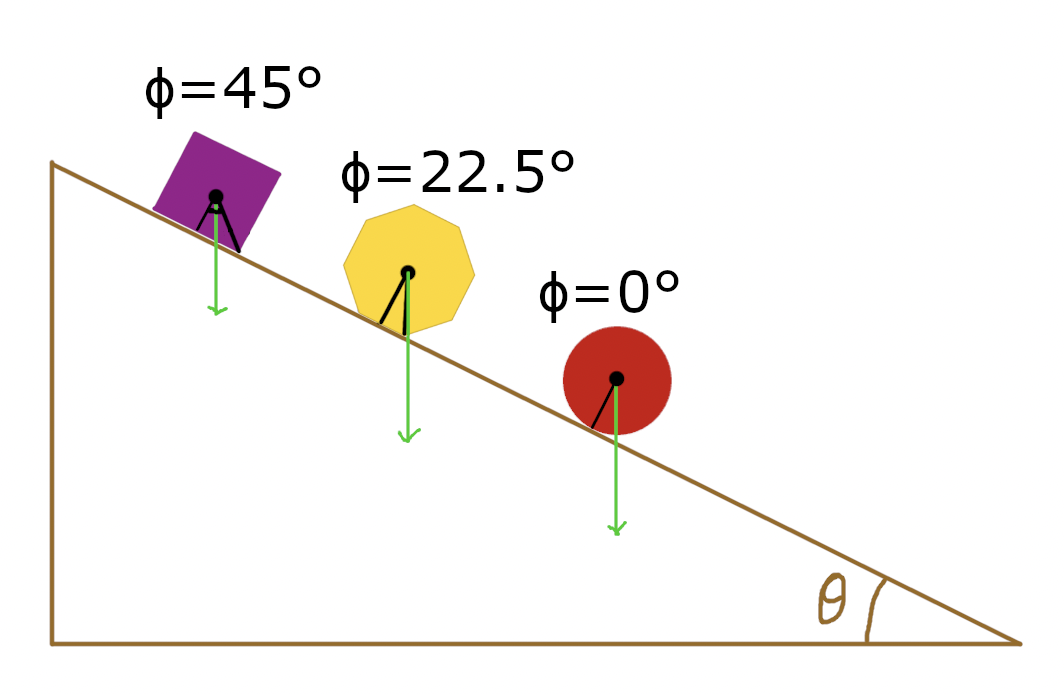There's an interesting subtlety here - the difference between rolling fast and rolling at all.
The second question is easier. For a polygon to start rolling down the hill, we need two thingsonly one thing:
- Static friction strong enough to prevent the shape from slipping.
- $\theta > \phi$, i.e. the object's center of mass (think of it as the "middle" of an object) is past the furthest corner of the polygon.
$\theta > \phi$, i.e. the object's center of mass (think of it as the "middle" of an object) is past the furthest corner of the polygon.
Take an assembly of shapes on a hill:
In this situation, the square is stable, the circle is unstable and will roll, while the octagon is just on the verge of moving. In general, an $n$-sided regular polygon has $\phi_n = \frac{180^\circ}{n}$ - as $n\to\infty, \phi_n \to 0$, i.e. by adding more sides and making the shape rounder, you decrease the angle needed to get it moving.
EDIT: a comment pointed out that the first condition was not needed. Even if the static friction is weak and the square begins sliding, it still will not roll unless the center of mass (black dot) is to the right of the support point (black line).
However, this analysis assumed that the shape started at rest, flat side down. If the octagon were given a push to get it started, it would also roll, but in a jagged "bumping" motion that would dissipate kinetic energy with each corner impact. This is the more difficult, first question, "Once rolling, which one accelerates faster?", which was already thoroughly answered in the linked question.
